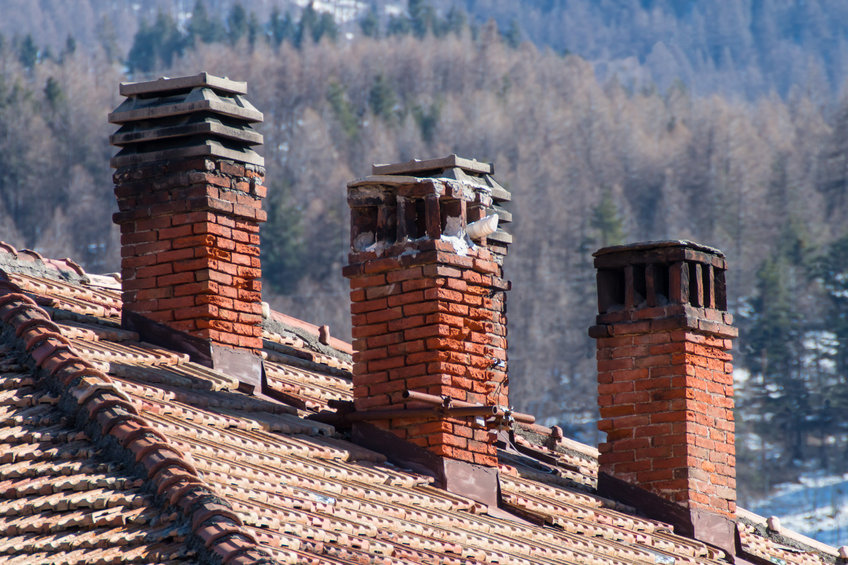Why it Happens
Before you fix the problem, it is important to understand why it happens and what you can do to prevent it from happening in the future. In most cases, cracked clay flue liners occur when the heat from the fireplace is not evenly distributed throughout the chimney.

Steps to Fix a Cracked Clay Flue Liner
- Inspect the Bottom of the Chimney
The best way to do this is to start by cleaning any ash or soot from the interior wall of the chimney. You can access this area by opening the clean-out door, often located at the bottom of the chimney. The more shards of clay you clean out, the higher the extent of damage or number of broken clay tiles. Any damage found in the lower areas of the chimney could be very dangerous if carbon monoxide and other harmful flue gases get inside the building.
- Check The Extent Of Damage From The Top
This next step will require you to climb onto your roof and shine a bright spotlight down the chimney. You need to look for any missing pieces, cracks, or gaps between the sections of the clay flue liner. You can count yourself lucky enough if only one or two pieces are broken from the top. All you need to do in this case is to replace the tiles by tapping them loose before removing the damaged piece. You then replace them by mortaring in new sections and ensuring they fit snugly into place. However, installing a metal liner would help if the broken parts are much deeper within the chimney.
- Install a Flexible Metal Liner
If the broken clay flue liner is deeper within the chimney, you need to cover it with a metal liner working your way from the top. Start by measuring the chimney length from the top to the location where your stovepipe is attached. If your chimney connects directly to the fireplace, then you need to measure it from the top of the chimney to the damper. Using a pair of tin snips, cut the metal liner so that it can be one foot longer than the above measurement.
- Transfer the Liner to the Bottom
You need an assistant to help you at the bottom once you drop a rope down to fix the liner. The first thing you need to do is to tie the rope at the end of the new metal liner. Next, carefully feed it into the top of the chimney while your assistant is pulling the rope from the bottom. Be careful enough not to bend the liner further than what is necessary when transferring it from the rooftop to the chimney.
- Finalize the Installation
Once your assistant has confirmed that the liner has reached the required level, you need to attach the top of the liner to the chimney top with the cap that was supplied with the replacement liner kits. Keep in mind that these chimney caps may vary between kits but are often attached with multiple simple screws for easier installation. The bottom of the liner needs to be attached to the inside of the thimble.
Smoke and other dangerous flue gases are likely to enter your home if you do not have a liner or some pieces of what makes the liner is broken. Smoke that rises the chimney leaves deposits of creosote on the brick surface inside the chimney that creates a fire hazard. Clay flue liners can crack because of deterioration or unequal heat distribution and thus may require a replacement.
